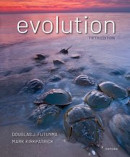
|
Futuyma, Kirkpatrick (2023) Evolution.
fifth edition
In the previous blog I discussed Bergstrom and Dugatkin Evolution, third and first edition. Today I continue my investigation of 'junk DNA' in the Evolution textbooks with a textbook by Douglas Futuyma and Mark Kirkpatrick (2023) Evolution also published this year.
Although "junk DNA" does not occur in the index, on page 86 (chapter
'Mutation and variation'), the authors state: "In humans for example, 98% of
the DNA does not code for any gene product." Note: they do not say
'protein product', but 'gene product'. However, the capture of figure 10.13
states: "Less than 2% is devoted to protein-coding sequences." (p.274).
So, if that is what they mean by 'gene product' the 98% is OK. They explain these matters in an excellent and up-to-date chapter about genes and
genomes (chapter 10). On page 281 the authors ask:
"Does that mean the 98% of our genome that is noncoding is actually junk? We are still far from having a clear answer to this fundamental question. (...) some of the resulting "junk" now plays key roles in regulating gene expression, and the cell's metabolism has coevolved with the total quantity of DNA in the nucleus. (...) Like an addict and his drug, eukaryotes may not be able to break their dependence on a bloated genome. But their is good news in this story. When ancient eukaryotes acquired large amounts of of noncoding DNA, it opened new options for the evolution of gene regulation. That, in turn, may have enables the origin of complex life-forms, including ourselves." (p.281)
In the end-of-chapter section called 'What We Don't Know' (by the way, a nice feature!):
"Also debated is the fraction of the eukaryotic genome that has a function. One large-scale study estimated that 80% of the human genome has a function." [the reference is the ENCODE publication in Nature, 2012]. "That estimate, however, has been criticized as far too high, and many evolutionary biologists would agree that perhaps only about 10% of our genome has a definite function" (p.281).

|
|
Figure 10.13. (p.274). Adapted from Gregory (2005) |
This seems a fair and correct description of the status of the scientific evidence. What I miss in figure 10.13 is the difference between functional
and non-functional DNA (perhaps an unreasonable demand!). The functional sequences outside protein coding
sequences will be hidden in the 98%. 'Functional RNA' is not present in
the book. One can find a comprehensive treatment of functional and
nonfunctional RNA in Moran (2023) (see
my blog
26 June).
"Alternative splicing is a major mechanism used by eukaryotes to increase organismal complexity " (p.274).
Is it really 'a major mechanism'? This is a controversial statement because there is no quantitative estimate of its importance. Futuyma and Kirkpatrick do not mention non-coding tRNA (transfer RNA), but ribosomal RNA (rRNA) is present (p.269). However, both are not introduced as good examples of non-coding DNA (they do not code for proteins but are functional).
Note [3] about Futuyma, 1st edition, 1979
Nicholas Barton et al (2007) Evolution
Nicholas Barton et al (2007) Evolution has a very good
discussion of junk DNA, selfish DNA, C-value, non-coding DNA. Fortunately,
they also pay attention to the disadvantages of a big genome (p.597). For
example, in insects metamorphosis requires rapid cell division and is
harder when massive amounts of DNA must be replicated. It shows that
natural selection can downsize large genomes. Which is good to know! It
brings the burden of large genomes back into focus. This is important:
transposons can by accident acquire a new function. They do not
give an estimate how often this happens. "Introns are frequently
considered to be junk DNA. However, comparative sequence analysis has
revealed that the sequence of some introns is highly conserved, suggesting
that functional constraints have played a role in evolution." (p.220).
"Overall, about 18% of nucleotides are conserved in introns and
intergenic regions, compared with 72% within exons" (546). "Such studies
suggest that in that in multicellular eukaryotes, at least as much
non-coding as coding sequence is maintained by selection." (p.547). If all
possible alternative splicing possibilities are taken into account,
species such as humans can make millions of different proteins, even
though they each have only 25,000 protein-coding genes. Alternative
splicing provides a significant source of novelty for diversification"
(p.221). This is regarded as controversial by some. Transposable elements have sometimes been co-opted to aid
their host (p.598). Sometimes pseudogenes acquire new functions.
These views contrast with those of Laurence Moran (2023). Further research is necessary.
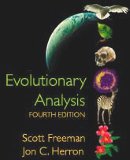
|
|||||||
Freeman, Herron (2007) Evolutionary Analysis
The most recent edition of Freeman and Herron is the fifth edition (2013). I don't have that edition, I used Evolutionary Analysis 4th edition (2007). There is no 'junk DNA' and no 'non-coding DNA' in the index. Unexpectedly and paradoxically, transposons –a prime example of selfish genetic elements– are discussed in chapter 15 'Phylogenomics and the molecular basis of ADAPTATION'.
But first, read this stunning remark (remember, this book was published before ENCODE 2012):
"In humans only about 1.2% of the genome codes for proteins."
(p.576)
They do not comment on this remarkable statement. It is an isolated statement from an unknown source. However, they do state
that the "extra" DNA responsible for the C-value paradox consists of
transposable elements: "In the human genome, for example, over 44% of the
DNA present is derived from transposable elements (p.576). What about
the remaining 54%? They do not tell. Unknown?
Fortunately, the authors discuss the burden of these genomic parasites. It costs the cell time, energy and resources to replicate a genome with a lot of transposons (p.577). Funny remark: transposons are present in the genome in "often appallingly large numbers"! Such an emotional remark is really funny for a textbook! Good to know: transposons are not 100% non-coding DNA, because they encode the enzyme transposase. They have further important information: defense mechanisms against transposons (!), and: "work by John Moran (!) (1999) suggested that transposition events in eukaryotes may occasionally result in mutations that confer a fitness benefit." (p.581-583). They conclude:
"Even though most transposable elements function as genomic parasites and most transposition events result in deleterious mutations, it is increasingly clear that at least some transposition events result in important new genes or other changes that have a positive impact on the fitness of organisms." (p.584).
My conclusion: there is
no 'junk DNA' and no 'non-coding DNA' in the index, and more puzzling, there is also no discussion of introns and splicing.
That is a serious omission for an evolution textbook. The origin of introns
is a longstanding evolutionary mystery. However, they have interesting
things to say about transposable elements. According to Laurence Moran 37%
of our genome consists of introns and according to Futuyma, Kirkpatrick
(2023): 26% (see figure above). Obviously, without introns Freeman and
Herron don't have a complete overview of non-coding DNA and can't calculate
the sum total of functionless DNA in our genome. Yet, they know that 1.2% of
the genome codes for proteins! I guess that Freeman and Herron are optimistic about the possibility of finding more
useful elements in the uncharted parts of the human genome and therefore
avoid the concept 'junk DNA'. Reasonable.
Strickberger's Evolution Fourth edition 2008
Strickberger's Evolution is a famous evolution textbook. The first edition was published in 1990. The fifth edition appeared in 2013. The most recent edition I have is the fourth edition (2008) authored by Brian Hall and Benedikt Hallgrimsson (I don't know whether Strickberger participated in this edition). 'Junk DNA' [1] and 'non-coding DNA' are not in the index. However, 'junk DNA', 'selfish DNA' and 'C-value paradox' are discussed in the text.
"According to some molecular biologists, many transposable elements and other forms of repeated sequences contribute little, if any, function to their host cells. Because the DNA replication process cannot discriminated between functional and nonfunctional sequences, it replicates any introduced sequence. Transposon DNA and repeated sequences may therefore perpetuate parasitically as either "junk" or "selfish" DNA. (p.221).
Important information is present in Box 12.1 'Quantitative DNA measurements'. In connection with the ENCODE project the following paragraph contains intriguing thoughts which I quote in full:
"According to Bird [1995], eukaryotes were able to circumvent such "noise" by a nuclear membrane that separates transcription from protein translation, allowing only translatable messenger RNA sequences to filter into the cytoplasm, and by tightly folding the DNA of functionally unnecessary genes into nontranscribable confirmations, using nucleosomes and their histones. To these transcription-repressing mechanisms, Bird claims that vertebrates added DNA cytosine methylation, formerly used mostly to suppress genomic parasites such as transposons." (p.260). (my bold)
Especially the concept transcription-repressing is intriguing because according to the ENCODE project and Laurence Moran there is pervasive transcription in the cell and most of it is noise! This would disprove the success of transcription-repressing mechanisms? Apparently, the mechanism fails spectacularly.
My own thoughts are that maybe because transcription is restricted to the nucleus and those RNA transcripts are not exported to the cytoplasm, and consequently are not translated, large-scale transcription can be tolerated by the cell. This assumes that protein synthesis is more costly than transcription. I admit that it is still a burden, but the burden has been halved.
In contrast to Freeman, Herron (2007), in this book 'introns', the "Introns early - Introns late-hypothesis" and alternative splicing are present. Interestingly, they describe introns as mobile DNA sequences that can splice themselves out, acting like transposon-like elements.
Brian Hall and Benedikt Hallgrimsson do not favor the concept 'junk DNA'. It is obvious from this remark: "various biologists have been tempted to consider some or many such sequences as forms of "selfish DNA'." (p.262).
Stephen Stearns, Rolf Hoekstra (2005) Evolution, an introduction, second edition, paperback.
Relevant topics are 'jumping genes', 'transposons', 'introns', 'B-chromosomes'. Not found in other textbooks: B-chromosomes are not transcribed and do not contain information vital to the organism, they are genomic parasites (p.362). This fits the definition of junk DNA, although Stearns and Hoekstra do not use the concept. They make an interesting remark about transposons: several mechanisms have evolved to suppress the deleterious effects of active transposons (p.363). I would like to know more about them! "In humans they [transposons] may account for 45% of the genome". "Transposons illustrate genomic conflict between selection favoring mutants that increase the replication rate of transposons and selection favoring the suppression of transposons through stronger replication control." (p.363). They have a chapter about Genomic Conflict. There is no new edition of this textbook.
Mark Ridley (2004) Evolution, 3rd Edition
Non-coding DNA is listed in the index under 'DNA, non-coding' [2]. One relevant paragraph 2.4: 'Large amounts of non-coding DNA exist in some species'. The human genome contains 5% maybe up to 10% of genes. "The function of non-coding DNA is uncertain. Some biologists argue that it has no function and refer to it as "junk DNA". Others argue that it has structural or regulatory functions." "Most non-coding DNA is repetitive." (p.27). Alternative splicing is mentioned (gene slo), but there is no diagram of exon-intron structure of a gene (!). The existence of genes coding for RNA (rRNA, tRNA) is mentioned in a footnote ("some genes code for RNA" ! p.25). Further information in Chapter 19 'Evolutionary Genomics' is about the evolutionary history of transposable elements ("About 45% of the human genome is derived from transposable elements", p.567). I am a little disappointed, I expected more of Ridley. Please note, that the draft Human Genome sequence was published in 2001. No definitive conclusions possible at that time. There is no new edition.
John Archibald (2018) 'Genomics: A Very Short Introduction', Oxford University Press, 135 pages, has a succinct description of the ENCODE project in the paragraph "Jumping genes and 'junk' DNA" (p.50-53): "The ENCODE project's broadest and most controversial claim is that 80 per cent or more of the human genome has a biochemical function. "
Peter Skelton 'EVOLUTION. A biological and palaeontological approach' (1993, 1994, 1996)
Initially, I ignored this book because I did not expect it would contain junk DNA. Surprise. In chapter 3: Heredity and Variation, the C-value paradox is explained and illustrated with the well-known genome size diagram of various groups of organisms (Fig. 3.5). It immediately stands out that all salamanders and lungfish have bigger genomes than all mammals, birds and reptiles. The C-value paradox is explained by differences in the amount of various repetitive sequences, and polyploidy. Bats and birds have a high metabolic rate and their genome size is lower than other mammals (p.84). lntrons were discovered in 1977. There is a diagram (Fig. 3.9) of gene structure (intron-exon structure). This figure shows introns with smaller sizes than exons. Unfortunately, students get the false impression that these are the right proportions. However, introns are generally larger than exons. Alternative splicing is described (p.90). Transposons are explained (p.92). Conclusion: despite this book appeared before the publication of the human genome in 2001, the ingredients of 'junk DNA' are present. So, it doesn't matter that the word 'junk DNA' isn't used.
Conclusion:
The word 'junk DNA' is absent in the index and in the text of 4 of the 9 textbooks I investigated. However, if 'junk DNA' is not in the index of a textbook, it always pays to search for transposons, introns, jumping genes, selfish DNA, pseudogenes or C-value paradox. This review of evolution textbooks is not exhaustive (I could not check all editions of all textbooks). Those listed here are the most interesting and give sometimes additional useful insights and different points of view. Some are pre-2012, some post-2012, but all except Skelton are post-2001. In general authors know that less than 2% of our DNA codes for proteins, but are not sure about the rest. I agree. Nobody can claim to know exactly how much of our genome is useless junk. Even assuming that 90% of our genome is junk, there is no definitive answer to the question why is there so much junk in our genome, and why it hasn't been eliminated.
Not discussed here is John Parrington (2017) 'The Deeper Genome. Why there is more to the human genome than meets the eye' (OUP paperback). This is a must read. He gives very interesting examples of beneficial non-coding DNA derived from transposons, and has a point of view other than that of Moran (2023). I hope to blog about it in the future.
Thank you for reading!
Notes
- Later I found 'junk DNA' listed under 'Deoxyribonucleic acid' - "junk DNA" in the index! [30 Jul 23]
- Non-coding DNA is listed in the index under 'DNA, non-coding' [30 Jul 23]
- Futuyma (1979) Evolutonary Biology (1st edition). page 439: "Nonetheless, there is an enormous amount of redundancy
in the genome, and its significance is obscure. In may animals as much
as 60% of the genome seems to consists of short (less than 300
nucleotide pairs) repeated sequences, some present in thousands of, even
a milion, copies". That's all. (personal communication Gerdien de Jong) [1 Aug 23]
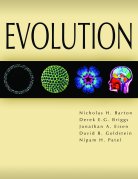
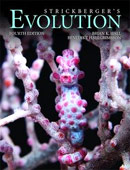
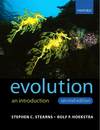

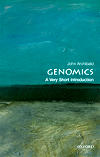
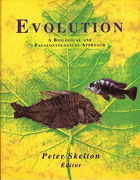
As a more general comment, there is a good paper on the relative and quantitative costs of DNA, RNA, and protein.
ReplyDeleteThe Bioenergetic Costs of a Gene
https://www.pnas.org/doi/10.1073/pnas.1514974112
To summarize the paper, the lifetime costs of DNA replication and maintenance is much lower in larger eukaryotic cells than in prokaryotic cells. In addition, the much lower effective population sizes of some eukaryotes (e.g. the human effective population size is 10,000-20,000) means that selection can't see insertions of thousands to tens of thousands of base pairs. Even junk RNA transcripts with median expression levels may not be visible to selection in humans, much less transcripts that have less than one copy per cell. Only protein translation seems to have a high enough bioenergetic cost to be consistently seen by selection in human evolution.
A few comments specifically about this blog post . . .
ReplyDeleteIt has always been false that all non-coding DNA was considered junk. This has never been the case. Ever. Perhaps Futuyma and Kirkpatrick didn't intend to suggest such a thing, but this misconception has been propagated by others. Even Moran thinks there is 4 times as much functional non-coding DNA as coding DNA. This would include functional transposons and all of the other types of functional non-coding DNA that others have put forward. Finding even a few thousand functional transposons still only adds 0.1% or less functional DNA (probably much less) to the human genome. It is also foolish to think that finding function in a tiny fraction of transposons means that they are all functional. This same logic applies to non-coding DNA in general.
From what I have read recently on alternate splicing it would seem that a vast majority is due to splicing errors resulting in non-functional transcripts. Only a relative few alternate transcripts have known proteins associated with them, and most non-canonical transcripts are quickly degraded in the nucleus. I don't see how alternate splicing or slicing errors play a meaningful role in organismal complexity.
As to introns, it looks like Futuyma and Kirkpatrick got the number from Gregory (2005) who got the number from the 2001 human genome paper. The estimates from the initial sequence was always going to be an underestimate, as even the authors stated in the paper. It isn't too surprising that the number has gone up as better sequence and better analyses have been done. Also, since the lifetime bioenergetic costs of introns is quite low (see paper linked in previous comment) the benefit of a functional and beneficial gene greatly outweighs the costs of introns. You would need much higher effective population sizes, shorter generation times, and smaller cell sizes for selection to see the costs of introns which may be why they are missing in some unicellular fungal species like Saccharomyces.
Eric, thanks for your useful comments.
ReplyDeleteAbout the Michael Lynch paper:
The mathematics in the Lynch paper is far outside my comfort zone, I really can't understand them, let alone check them.
What would be interesting to know and easy to understand for me is this: does it produce precise enough predictions that can be tested in practice? Does it produce falsifiable predictions?
Do you know whether this kind of testing has been done?
For example, does his theory predict that birds as a group have smaller genomes than humans? Or does it all depend on effective population sizes and other variables which are difficult to measure in the real world?
Hummingbirds? Common swift (Apus apus)?
Does the Lynch-theory predict the huge difference in pufferfish and lungfish genome size? Are there really 8 times as many pufferfishes than humans?
I wonder whether this kind of detailed testing has been done.
I have to study your second comment.
Thanks again for your detailed comments.
Have a nice day.
Gert
Apologies for the lengthy comment, but further reading spawned quite a few thoughts, especially papers I read on bird and mamal genome sizes.
DeleteAs far as the math from the Lynch paper, the main takeaway is that the cost of one base of junk DNA for a mammal like humans is about 100 millionth of the lifetime energy budget for a cell. This means a 1,000 base insert of junk DNA will only require an increase of just 1 millionth of the current energy budget. In other words, it's a tiny number. DNA repair is even less than that since you are only fixing 1 base out of every 1,000 (just a guess off the top of my head). Transcription isn't that much more than the cost of replication due to the ability to recycle RNA bases. Proteins, however, are 200 to 600 times more costly than the RNA that codes for it.
This explains why junk DNA can accumulate in the genomes of eukaryotes. However, there are many other factors. The relationship between latitude and climate might make for a decent analogy. I think we can all agree that there is a general trend where it gets colder the closer you get to the poles. However, even though the Netherlands are at about the same latitude as Moscow the winters are quite different in those two regions. Does this disprove the relationship between latitude and climate? No. There just happens to be other factors that create more variation. Biology itself is pretty messy and noisy, so we wouldn't expect simple rules to give us precise predictions just as we don't expect a tight correlation between latitude and climate.
I did start reading a bit on the size of bird genomes as compared to something like mammal genomes. As it turns out, birds have higher metabolisms which selects for small cell size. There is actually a direct relationship between cell size and genome size in birds where the bird species with the smallest cells have the smallest genomes. This probably isn't the whole story, but it's a very interesting correlation. A google search for "bird cell size genome size" should find plenty of examples.
Dynamics of genome size evolution in birds and mammals
https://www.pnas.org/doi/10.1073/pnas.1616702114
The other factors are going to be mechanisms that may be specific to a given lineage. Population sizes and cell sizes merely allow for larger genomes, but you need other factors to build those larger genomes and repression of factors that would shrink these genomes. This may very well be the case for pufferfish. They may have mechanisms that do a better job at repressing transposon activity compared to other lineages like lungfish or salamanders. The main mechanism for removing junk DNA in bird and mammal lineages is large deletions of over 10,000 base pairs. This also makes sense since large differences can be seen by selection in smaller populations.
Like I said above, biology is messy, complex, and hard to model. It isn't as simple as the stoichiometry or simple physics experiments you learn of in high school (or whatever the Dutch equivalent is). Like many complex systems, the best we can often do is trends with the full knowledge that there will be outliers.
Hi Eric, that is indeed what we need: 'Dynamics of genome size evolution in birds and mammals'. That is genome biology! that is about real species! Thanks! Especially Fig 1 with genome size ranges fitted on an evolutionary tree. Very useful. Bats have smaller genomes than the rest of mammals! That is biology! Birds have smaller genomes than bats. etc.
DeleteYou wrote "1,000 base insert of junk DNA will only require an increase of just 1 millionth of the current energy budget."
But does that imply that thousands of such inserts can happen unnoticed by natural selection? (generation by generation). Where is the limit? Our genome could be 6 GB or 10 GB ... in the future? When will it stop? When is it too much? If a process with relatively small increases in genome size can continue unnoticed forever than there is no limit!
"Proteins, however, are 200 to 600 times more costly":
that is a huge difference! Is that the production cost of one protein compared with the production of one corresponding mRNA?
Transposon repression: indeed that is mentioned more than once in the evolution textbooks, this should be better explained in the textbooks. we need an integration of genomics, metabolism, cellbiology, ecology, phylogeny... and we should not forget: plants. For example: 'Plant Transposons and Genome Dynamics in Evolution'
https://www.wiley.com/en-nl/Plant+Transposons+and+Genome+Dynamics+in+Evolution-p-9781118500101
Eric (and others):
DeleteDoes the Lynch theory about energy costs of replication, transcription, translation predict the maximum amount of junk DNA in our genome is that will be tolerated by natural selection? and above which natural selection will act against it?
Furthermore, if it is applicable to all eukaryotes, can the theory explain the small pufferfish genome as well as the big lungfish genome?
may be this may answer some of your questions :
ReplyDeletea more difficult issue often emerges. Namely, very different models may be found to provide a good fit to the observed data (e.g., [47]; see [48] for a phylogenetic perspective on the topic). In other words, particular parameter combinations may be found under competing models that are all capable of predicting the observed patterns of variation. For example, assuming neutrality, one may match an empirical observation at a locus by fitting the timing, severity, and duration of a population bottleneck or, alternatively, when assuming a constant population size, by fitting the rate and mean strength of selective sweeps. This fact alone implies a simple truism: The ability to fit the parameters of one’s preferred model to data does not alone represent proof of biological reality. Rather, it suggests that this model is one—out of potentially very many—that represents a viable hypothesis, which should be further examined via subsequent analyses or experimentation. PLoS Biol 20(5): e3001669. https://doi.org/10.1371/journal.pbio.3001669
Thanks Anonymous for your article 'Recommendations for improving statistical inference in population genomics'. It tells us that several incorrect population-genetic models can predict the same data when parameters are adapted to the data. As far as I understand. Above that there is no single species in the paper, it is mathematics, not biology.
ReplyDeleteA comparison between all these books does provide a very nice panorama.
ReplyDeleteIt is surprising that in the book by Douglas Futuyma and Mark Kirkpatrick (2023), genome products are equated with protein coding sequences. The percentage indicates that they indeed mean protein coding sequences. It can be considered as 'wrong' because there are a lot of genome products that do not code for proteins. lncRNAs, tRNAs, rRNAs where one speaks of genes for these RNAs.
Also for me the unit of costs of replication, transcription and protein synthesis as suggested by Eric was not entirely clear.
What is striking is that most of the books about evolution that you are discussing do not, if at all, mention junk. The term is in fact not well defined. Junk DNA does not equate to non-coding DNA, because much of this non-coding DNA we know contains a lot of 'useful' DNA, for tRNAs, rRNAs, introns e.g. Would the authors be embarrassed admitting that there is DNA whose function they do not know? That is why they provide so little information about it and even avoid the term? Because even if they don't know the function, there is a whole history to tell about junk DNA. I now know (thanks to going on reading after having read your blogs) that Susumu Ohno identified the duplicated genes as mutating genes. It was these genes that he called junk DNA. After that, the term has been confused with anything non-coding.
Reading this, you can safely say that the junk DNA (which we do not know what it is for) receives very little attention in the evolution books, while it may well be the 'delivery room' for new genes. In that respect, Moran's book is a good investment; it is to be expected that there will be a lot of discussion about junk, although it may happen using a different name.
Thanks for the tip to John Parrington (2017)
Marleen, at first it may seem disappointing that some evolution textbooks do not mention junk DNA. Indeed 3 out of 8 do not mention junk at all. But when you think about it
ReplyDelete(1) textbooks do teach well-established facts and theories. Junk is still controversial. We don't have a theory to predict genome sizes and the percentage of functional DNA in genomes. Larry Moran's book appeared just this year and it is a polemical and somewhat biased book. We should not make the benefit of hindsight error. Please pay attention the year of publication!
(2) The word 'junk' is not important perse, What's in a name? the concept behind it is important. The concept behind junk DNA is that there is nonfunctional DNA in genomes that natural selection is unable to eliminate. And what is known for a long time is the existence of transposons, repetitive DNA, introns, pseudogenes, segmental duplications, polyploidy and C-value paradox. And those concepts are present in the textbooks. So, the situation is not as bad as you think! It is still too early to make hard claims about the percentage of junk in all genomes!
How do you challenge the portrayal of 'junk DNA' in evolutionary biology textbooks? Tel U
ReplyDelete